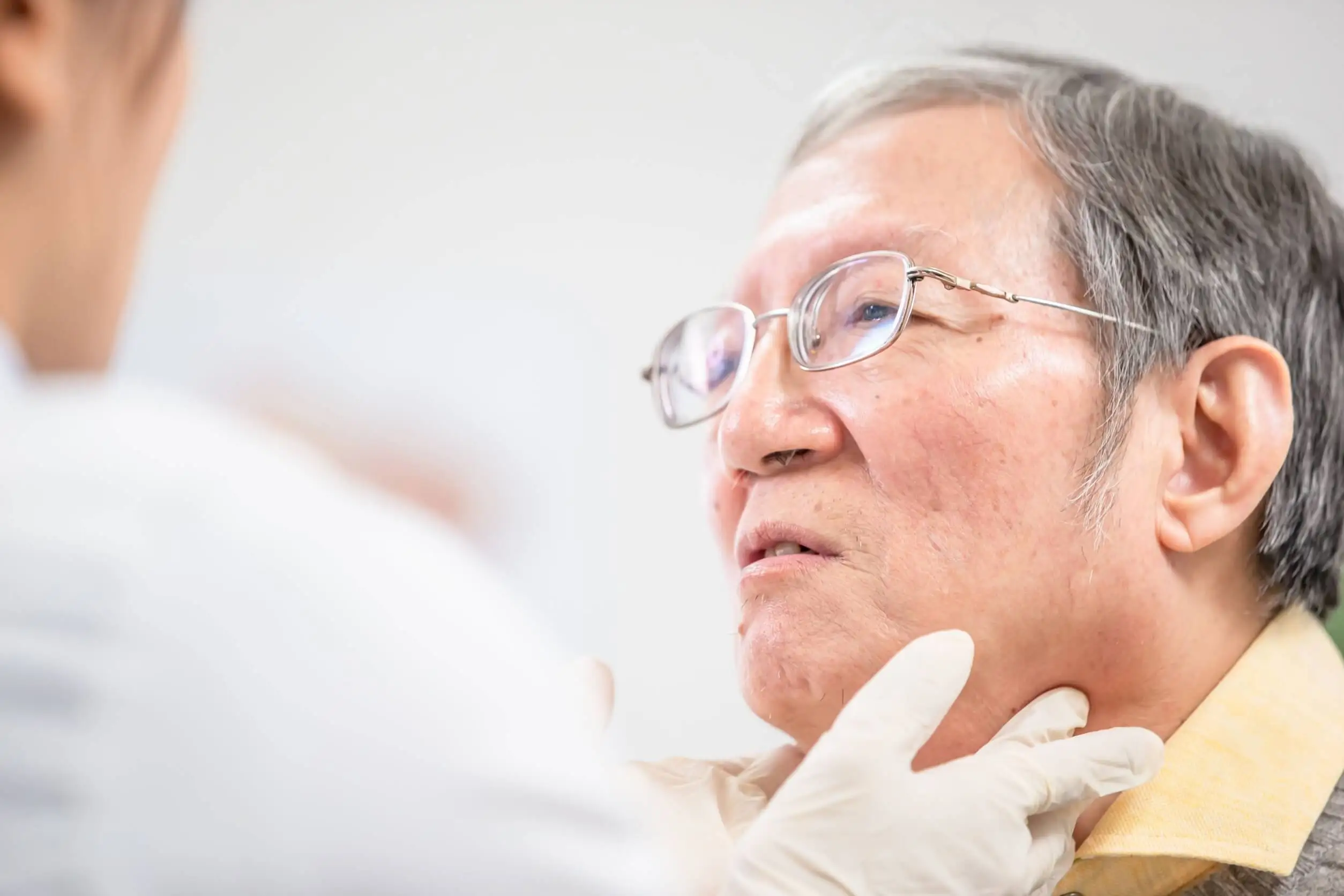Zenker's Diverticulum: What Is It and How Is It Treated?


Written and verified by the doctor Mariel Mendoza
Zenker’s diverticulum is also known as “pharyngoesophageal diverticulum”. It’s the most common esophageal diverticulum and its name comes from the German pathologist Zenker, who published a review of 22 cases in 1874.
The prevalence of Zenker’s diverticulum is very low, a maximum of 0.11% worldwide, and it’s more common in older age and in males. It’s usually asymptomatic and, when symptomatic, requires surgical resolution.
How does Zenker’s diverticula originate?
Zenker’s diverticulum is considered a propulsive diverticulum. It’s due to protrusion of the pharyngeal mucosa and submucosa through a relatively weak area of the posterior pharyngeal wall, called Killian’s triangle. This muscle weakness is located in the upper third, where the posterior junction of the pharynx with the esophagus occurs.
Although its cause is unknown, it’s related to the internal pressure that occurs during swallowing in conjunction with the presence of fragile areas in the pharynx.
Symptoms

Initially, Zenker’s diverticulum is asymptomatic or has with mild symptoms such as a chronic sore throat. As it grows, the diverticulum begins to fill with food and this generates symptoms: the most common symptom is difficulty swallowing (dysphagia).
It’s accompanied by non-acid regurgitation, drooling, heartburn and bad breath (halitosis). There may also be dysphonia or hoarseness due to involvement of the nerve innervating the vocal cords, neck pain, chest pain, vomiting, chronic cough, choking sensation, the presence of neck mass, and weight loss.
Zenker’s diverticula can become complicated. Bronchial aspiration pneumonia is the most frequent complication. Less frequent complications include hemorrhage, perforation of the airway or mediastinum, ulceration, infection of the diverticular sac, or esophageal compression.
Discover more: A Sore Throat When Swallowing: Causes and How to Relieve It
Zenker’s diverticulum, the most frequent diverticula
Zenker’s diverticulum, although considered a false diverticulum, since it only comes with mucosa and submucosa, is the most frequent and represents 52-82% of all diverticula.
The name comes from the German pathologist Friedrich Albert Von Zenker. Together with Hugo Von Ziemssen, they described it in detail in 1878, although it had been previously described by Dr. Abraham Ludlow in 1769.
It’s more frequent in old age, between the seventh and eighth decade of life, and in men. The prevalence varies from 0.01 to 0.11% and is mostly asymptomatic.
Diagnosis of Zenker’s diverticulum

For the diagnosis of Zenker’s diverticulum, an esophagogram is required. The esophagogram, or “barium x-ray”, consists of a fluoroscopic examination of the esophagus with contrast dye.
Other methods such as manometry and pH study can be used to determine if the diverticulum has an abnormal swallowing muscle response or the presence of gastroesophageal reflux. Entry esophagoscopy isn’t recommended due to the risk of perforation.
The diagnosis is confirmed by barium radiography. In it, the swallowing process can be seen and the presence of the diverticulum that moves to one of the sides of the neck, mostly to the left side, is evidenced.
You may be interested in: Gastroesophageal Reflux Disease: Everything You Need to Know
The definitive treatment is surgical
When Zenker’s diverticulum is asymptomatic, it doesn’t require treatment. However, if Zenker’s diverticulum grows, fills with food, and begins to show symptoms, treatment is surgical.
Either open surgery or endoscopic surgery can be performed. In both, the diverticulum is removed or cut, as well as the cricopharyngeal muscle. This is called cricopharyngeal diverticulectomy and myotomy.
It should always be suspected in cases of difficulty swallowing
The diagnosis of Zenker’s diverticulum should be suspected by its symptoms, and confirmed by barium esophagogram. It should be the first suspected condition to be ruled out in elderly patients with swallowing difficulty.
All cited sources were thoroughly reviewed by our team to ensure their quality, reliability, currency, and validity. The bibliography of this article was considered reliable and of academic or scientific accuracy.
- García M, Figueredo P. Divertículo de Zenker. Informe de dos casos. Cir Ciruj. 2006;74. Disponible en https://www.medigraphic.com/pdfs/circir/cc-2006/cc064l.pdf.
- Gómez, et al. Experiencia en el manejo del divertículo de Zenker: Una serie de 18 casos. Rev Col Gastroenterol. 2011;26(2). Disponible en www.scielo.org.co/scielo.php?script=sci_arttext&pid=S0120-99572011000200005.
- Luis E, et al. Divertículo de Zenker. Rev. Col. Bras. Cir. 2001;28(4). Disponible en https://www.scielo.br/j/rcbc/a/pLD489q8jVf8M5b95HjwXTq/?lang=pt.
- Peñaloza A, Rodríguez J, Murillo A, et al. Manejo del divertículo de Zenker con endoscopia avanzada. Revista Colombiana de Cirugia. 2016;31(4). Disponible en https://www.redalyc.org/journal/3555/355549418004/355549418004.pdf.
- Pérez T, et al. Diagnóstico y tratamiento del divertículo de Zenker. Rev Med Hosp Gen Mex 2005;68(3):155-159. Disponible en https://www.medigraphic.com/pdfs/h-gral/hg-2005/hg053e.pdf
This text is provided for informational purposes only and does not replace consultation with a professional. If in doubt, consult your specialist.








